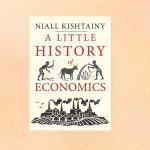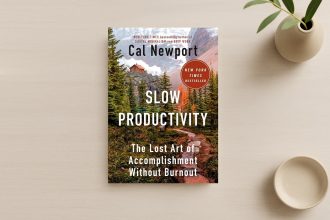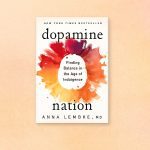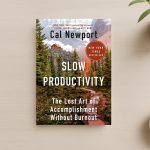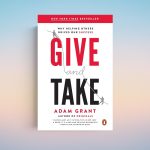Give and Take: Why Helping Others Drives Our Success by Adam Grant reveals how generosity can be a decisive advantage in professional and personal life. Through compelling stories and rigorous research, Give and Take by Adam Grant shows that successful givers build stronger networks, inspire collaboration, and achieve sustainable success-provided they balance altruism with strategic boundaries. The book dispels the myth that self-interest alone drives achievement, offering a practical roadmap for aligning helping behaviors with long-term goals. This engaging guide empowers readers to cultivate trust, influence, and impact through thoughtful, high‑value giving, transforming success into a shared journey that elevates both the giver and the receiver.
1. Introduction to Give and Take by Adam Grant
Give and Take by Adam Grant challenges one of the most persistent myths in modern professional life-that success comes to those who focus relentlessly on advancing their own interests. Drawing from pioneering research in organizational psychology, sociology, economics, and network theory, Grant demonstrates that a generous orientation toward others can be a decisive source of long-term achievement.
Grant’s premise is straightforward yet counterintuitive: in a competitive world, being a “giver” rather than a “taker” or “matcher” can result in extraordinary success-provided one gives strategically. Through vivid storytelling, he outlines how givers build deeper networks, inspire collaboration, and create a ripple effect of goodwill that often circles back in unexpected ways.
Give and Take by Adam Grant does not romanticize generosity. Grant warns that giving behavior can lead to burnout and exploitation if not tempered by self-awareness and boundaries. The arc of Give and Take is about how to align altruism with effectiveness: to craft a career where helping others propels-not hinders-personal goals.
2. Author Biography
Adam Grant is a renowned organizational psychologist, bestselling author, and professor at the Wharton School of the University of Pennsylvania.
Key points in his profile:
– Academic Expertise: Grant’s research focuses on work motivation, prosocial behavior, and how people find meaning and success in work.
– Recognition: Named one of the world’s top management thinkers; youngest tenured professor at Wharton.
– Other Books: Originals, Option B (with Sheryl Sandberg), Think Again.
– Style: Combines rigorous empirical research with accessible storytelling, often highlighting human narratives behind statistical findings.
– Public Roles: Frequent contributor to The New York Times and host of the podcast WorkLife.
Grant’s credibility rests on two pillars: massive real-world data sets from organizational contexts, and an ability to translate patterns into clear action steps for readers.
3. Structure Overview
Give and Take by Adam Grant unfolds across nine chapters plus an “Actions for Impact” section, blending professional case studies and psychological experiments.
Key structural devices:
- Typology of Interaction Styles – Givers, Takers, Matchers.
- Stories from Diverse Fields – Silicon Valley entrepreneurs, teachers, athletes, scientists, and corporate leaders.
- Research Integration – Empirical studies presented in narrative form.
- Practical Recommendations – Advice on sustainable giving.
4. The Three Reciprocity Styles
4.1 Givers
– Operate with an instinctive focus on others’ needs.
– Provide help without expecting immediate returns.
– Often build trust and loyalty that yield long-term paybacks.
– At risk of being exploited or overextended if boundaries are weak.
4.2 Takers
– Seek to maximize benefits to themselves-often at others’ expense.
– See interactions as competitions to be won.
– Short-term gains can erode credibility and damage reputations over time.
4.3 Matchers
– Operate on an even exchange basis: “I’ll help you if you help me.”
– Motivated by fairness; more transactional than givers.
– May punish takers by withholding opportunities.
Grant uses this framework to explore how each style plays out across industries, showing that extreme takers may succeed quickly but fail to sustain success.
5. Core Themes and Lessons
5.1 The Paradox of Giving
Generosity is often seen as a liability in cutthroat environments. Yet Grant’s research reveals that givers tend to dominate both extremes of the success spectrum-they are overrepresented at the bottom and the top. The difference lies in approach: unsuccessful givers are self-sacrificing to the point of depletion; successful givers protect their time, align giving with high-value impact, and cultivate reputational capital.
5.2 Building High-Quality Networks
Givers excel at:
– Expansive Ties: They form diverse connections because they add value without immediate reciprocity conditions.
– Trust-Based Collaboration: Their openness attracts allies in times of need.
Example: Venture capitalist David Hornik, who avoided pressuring entrepreneurs to sign deals quickly, earned loyalty and referrals that multiplied his opportunities.
5.3 The Ripple Effect
When givers help, they often:
– Inspire others to help in turn.
– Encourage teams to share credit, boosting morale.
Grant illustrates this with examples from corporate product design teams and academic research groups, where collaboration created breakthroughs impossible under competitive strain.
5.4 Recognizing Hidden Potential
Givers often spot overlooked talent where others fail. By mentoring without self-serving motives, they cultivate future allies, sometimes transforming struggling employees into top performers.
5.5 Powerless Communication
Some givers influence by adopting humility, vulnerability, or inquisitive listening rather than dominance. This can disarm resistance and invite cooperation. Grant cites negotiators and leaders who used self-deprecation or curiosity to shift power dynamics in their favor.
5.6 Preventing Burnout
Give and Take by Adam Grant distinguishes:
– Selfless Givers – prone to exhaustion because they help indiscriminately.
– Otherish Givers – balance others’ needs with their own priorities, channeling help into areas where they can excel without harm.
5.7 Protecting Against Exploitation
Strategies for givers include:
– Filtering requests.
– Focusing on high-leverage activities.
– Developing assertiveness to refuse harmful demands.
6. Chapter-by-Chapter Synthesis
Chapter 1 – Good Returns
Introduces the dangers and rewards of giving more than you get. Contrasts Hornik’s slow-deal approach with aggressive venture capital norms, showing how generosity can eventually yield greater opportunities.
Chapter 2 – The Peacock and the Panda
Explains how the three reciprocity styles build networks differently. Givers develop broad, deep networks by consistently adding value, whereas takers burn bridges and matchers focus on reciprocity enforcement.
Chapter 3 – The Ripple Effect
Detailed case studies on how giving multiplies across team structures. Demonstrates “collaborative credit,” where mutual recognition boosts joint outputs.
Chapter 4 – Finding the Diamond in the Rough
Examples of givers identifying untapped potential-teachers encouraging marginalized students, managers seeing strengths in misfit employees.
Chapter 5 – The Power of Powerless Communication
Profiles leaders who replaced dominance with empathetic dialogue, turning potential conflict into alliance.
Chapter 6 – The Art of Motivation Maintenance
Explores why some givers “burn out” and others “burn bright.” Aligns motivation with meaning and impact.
Chapter 7 – Chump Change
Discusses how givers can avoid becoming doormats, reframing generosity to preserve dignity and authority.
Chapter 8 – The Scrooge Shift
Research on how small contextual changes can tilt people from taking to giving-e.g., team identity cues, personal connections.
Chapter 9 – Out of the Shadows
Shows how quiet givers can become visible and reap reputational benefits, encouraging more people to adopt giving behaviors.
Actions for Impact – Practical advice:
– Practice “five-minute favors” to help without large time commitments.
– Identify “high-value intersections” where your help has greatest effect.
– Use “guilt-free boundaries” to decline requests that threaten your core goals.
7. Research Base of Give and Take by Adam Grant
Grant’s analysis draws from:
– Longitudinal business performance studies.
– Psychological experiments on negotiation and trust.
– Social network mapping to show structural advantages of givers.
– Studies of professional services, education, sports, and science.
By blending statistical rigor with narrative, he makes the data immediately digestible.
8. Practical Applications
For professionals seeking to emulate successful givers:
Give Early in Relationships: Builds trust before you need help.
Be Selective: Choose opportunities aligned with both your skills and values.
Balance Reciprocity Styles: Sometimes shift to matching to prevent exploitation.
Leverage Giving for Influence: Use service to earn credibility in leadership roles.
Measure Impact, Not Effort: Focus on contributions that produce tangible benefits.
9. Contemporary Relevance
In an era where connections determine career trajectories, Grant’s framework encourages a more sustainable form of networking-one that prioritizes mutual benefit over extraction. His thesis resonates with modern collaborative economies, open-source innovation, and social entrepreneurship, where trust and goodwill are key currencies.
10. Conclusion: Give and Take by Adam Grant
Give and Take by Adam Grant reframes success as an emergent property of relationships, sustained by a balance between generosity and self-interest. Givers, by nurturing trust and enabling others to flourish, often find themselves propelled forward by the very networks and goodwill they helped create.
Grant closes with a challenge: in daily choices-whether in hiring, mentoring, negotiating, or sharing credit-ask not “What can I gain?” but “What can I give?” The most successful outcomes arise when the two questions fuse into one.
If you found this summary helpful, please share it or leave a comment below.


